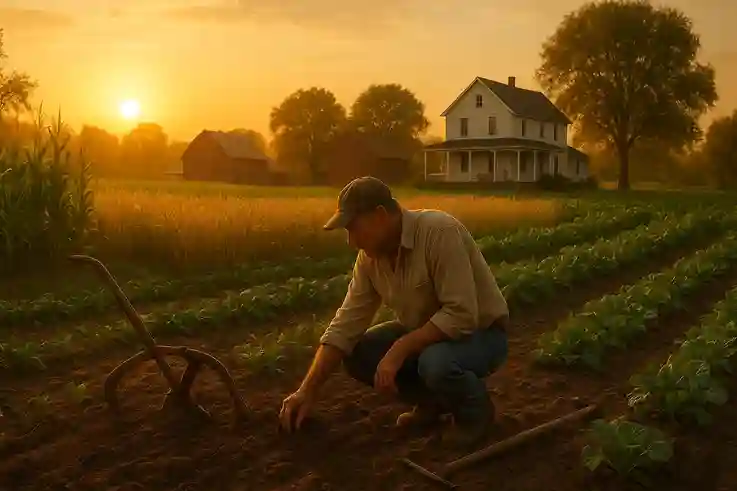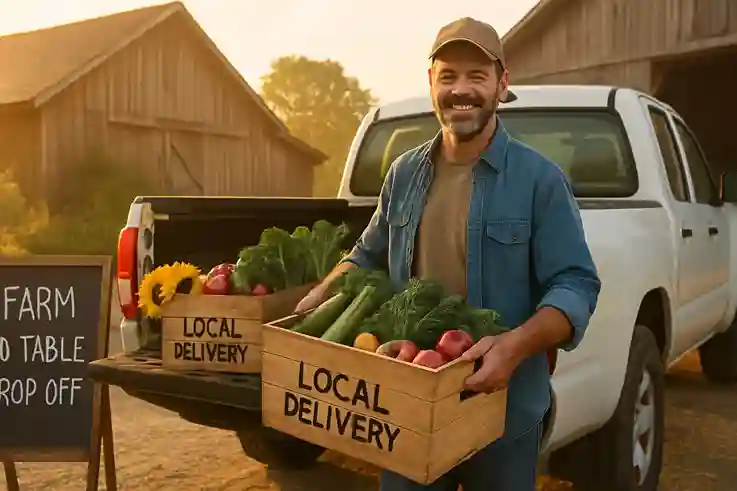Traditional Farming Explained
Traditional Farming has shaped societies, sustained communities, and preserved nature for centuries. It represents a way of life deeply tied to the land, where patience, cooperation, and respect for natural cycles guided survival. Unlike modern industrial agriculture, which focuses on speed and output, traditional methods emphasize balance and sustainability.
This blog explores the meaning of Traditional Farming, its history, key practices, and the benefits it continues to offer. We will also uncover powerful lessons from these timeless methods and how they can inspire modern agriculture.
In today’s world of rapid agricultural change, understanding Traditional Farming matters more than ever. As food systems face challenges from climate change, soil degradation, and population growth, looking back at ancestral wisdom can help us build a more sustainable future.
What Is Traditional Farming?
Traditional Farming is the practice of cultivating crops and raising animals using methods passed down through generations. It relies on natural resources like soil, water, and sunlight without heavy dependence on advanced machinery or synthetic chemicals. At its core, it reflects a deep connection between people, land, and nature.
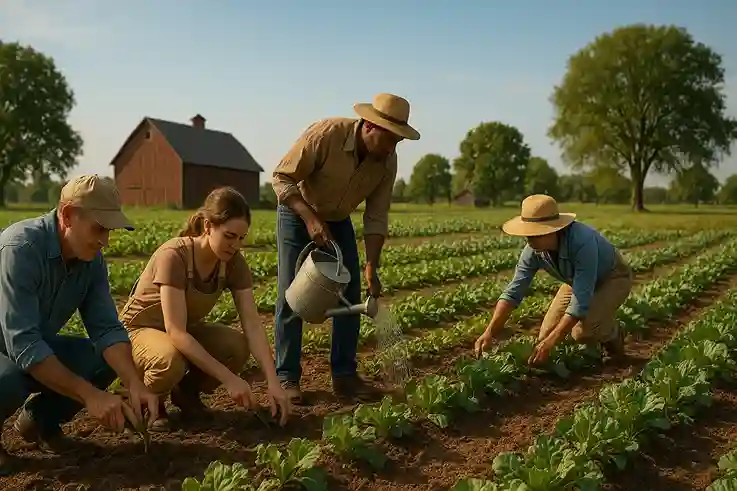
How It Differs from Modern Farming
Modern farming is built around the goal of producing the highest possible yield in the shortest time. Large-scale machinery speeds up planting and harvesting, while synthetic fertilizers and pesticides boost growth and protect crops from pests. Genetically modified seeds are also common, designed to resist diseases and withstand harsh conditions. These techniques often deliver impressive results in terms of volume, but they also place heavy demands on soil, water, and ecosystems.
Traditional Farming, in contrast, values sustainability over speed. Instead of chasing rapid output, it focuses on long-term balance. Farmers rely on organic compost, animal manure, and natural soil enhancers to keep the land fertile. Pest control is achieved through companion planting, crop diversity, and seasonal rotation rather than chemical sprays. Farming activities are guided by natural rhythms—sun, rain, and soil cycles—rather than by machines or artificial inputs.
This creates a fundamental difference in philosophy. Modern agriculture emphasizes efficiency, technology, and short-term productivity, while Traditional Farming emphasizes harmony with the environment, resilience, and community well-being. The contrast highlights an essential question for today’s world: should farming prioritize immediate gains or lasting balance?
The Role of Land, Community, and Seasons
In Traditional Farming, the land is not simply a tool for production. It is treated as a living partner that must be respected and cared for. Farmers observe the soil’s texture, fertility, and moisture to decide when and what to plant. They rely on natural rainfall patterns rather than artificial irrigation whenever possible, adjusting their work to seasonal shifts.
Community plays a central role in this system. Planting, weeding, and harvesting are often shared responsibilities. Families and neighbors work side by side, exchanging knowledge and labor. This cooperation builds trust and ensures survival during difficult seasons. Farming is not just individual work—it is a community practice that strengthens social bonds.
Seasons provide the rhythm of Traditional Farming. Each cycle teaches patience and timing. Farmers wait for rains before sowing and harvest only when crops are fully ready. The passing of seasons also allows the soil to rest and regenerate, preventing the exhaustion seen in many intensive modern systems. These natural pauses ensure continuity and balance across generations.
Traditional Farming, therefore, is more than a technique. It is a way of living in harmony with the land, the community, and the seasons.
Brief History
Traditional Farming began thousands of years ago when humans shifted from hunting and gathering to cultivating crops. Early farmers used simple tools, saved seeds, and learned to domesticate animals. These first steps created stable food supplies, allowing communities to settle in one place. Farming quickly became the foundation of civilizations, shaping economies, societies, and ways of life.
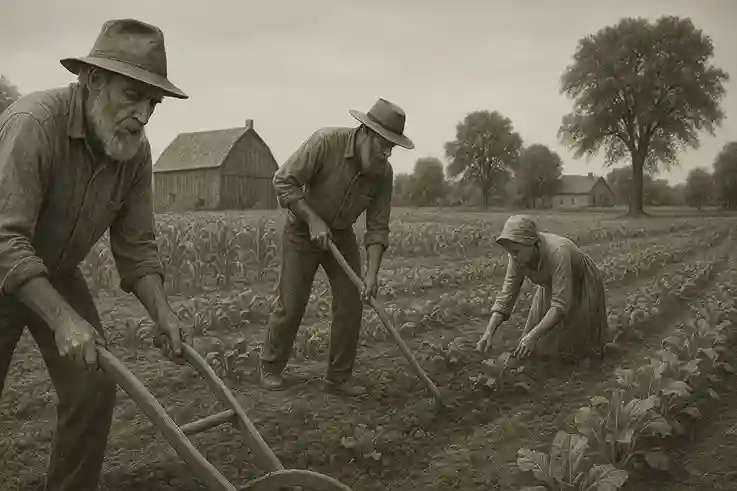
Connection Between Culture, Food, and Survival
Traditional Farming was never just about producing food—it was about culture and survival. Every community developed farming practices suited to its climate, soil, and resources. For example, rice cultivation shaped life in Asia, while maize farming defined cultures in the Americas. Food was tied to rituals, festivals, and traditions, reminding people of their bond with the earth. Farming was both a necessity for survival and a celebration of community identity.
Heritage and Ancestral Wisdom
Generations passed down farming techniques through observation and storytelling. Elders taught younger farmers when to plant, how to read the sky, and how to care for soil. These lessons carried not only practical knowledge but also values of patience, resilience, and respect for nature. This ancestral wisdom remains a living heritage, reminding us that farming is not just science—it is also tradition, memory, and culture.
Key Practices in Traditional Farming
Crop Rotation and Mixed Planting
Crop rotation is one of the cornerstones of Traditional Farming. Farmers plant different crops in the same field across seasons to maintain soil fertility and prevent pests. Mixed planting, or intercropping, ensures diversity and resilience. For example, legumes may be grown alongside cereals to naturally replenish nitrogen in the soil. These practices create balance and reduce the risk of crop failure.
Natural Irrigation and Water Conservation
Water management in Traditional Farming relies on natural sources such as rainfall, streams, and ponds. Farmers often build small channels, bunds, or earthen dams to direct water to fields. Seasonal storage methods, like collecting rainwater, help during dry months. By conserving and reusing water, farmers ensure sustainability without overexploiting rivers or underground reserves.
Use of Organic Fertilizers and Compost
Soil health is protected with natural inputs rather than chemicals. Farmers use animal manure, composted plant matter, and green manure to enrich fields. These organic fertilizers improve soil structure, increase microbial life, and provide long-term fertility. Unlike synthetic fertilizers, they restore rather than exhaust the land.
According to USDA Farmers.gov, improving soil health is central to sustainable farming practices (farmers.gov).
Community-Based Labor Systems
Traditional Farming often thrives on cooperation. Families and neighbors come together for planting and harvesting. In many cultures, these communal efforts are celebrated with rituals and feasts. Sharing labor reduces individual burdens and strengthens social ties. Farming becomes a collective responsibility rather than an isolated task.
Benefits and Challenges
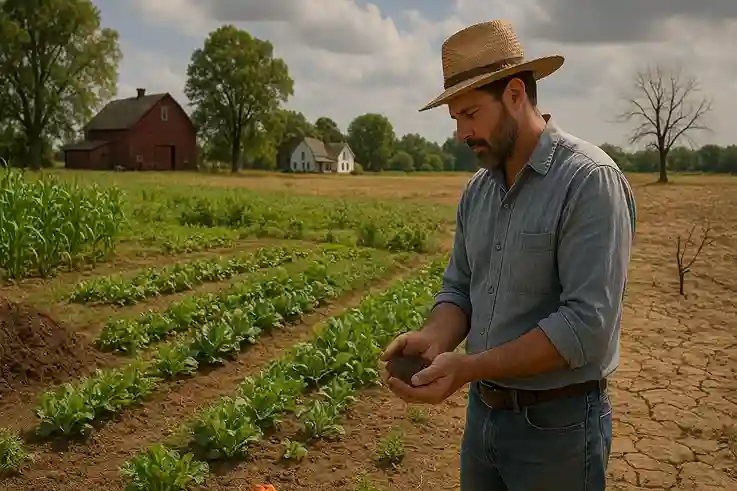
The table highlights both the strengths and difficulties of Traditional Farming. On one side, it shows how these practices protect soil, support biodiversity, and preserve cultural traditions while strengthening local communities. On the other side, it presents the modern challenges farmers face, such as lower yields, climate stress, competition from industrial agriculture, and the struggle to adapt without losing heritage.
Together, the benefits and challenges remind us why Traditional Farming remains valuable yet must evolve to stay relevant.
| Benefits of Traditional Farming | Challenges of Traditional Farming Today |
|---|---|
| Protects soil health and biodiversity through natural methods | Lower productivity compared to modern industrial farming |
| Strengthens communities and supports local economies | Climate change and water scarcity threaten stability |
| Reduces environmental impact compared to industrial farming | Pressure from commercial agriculture and globalization |
| Preserves cultural knowledge, traditions, and ancestral wisdom | Balancing tradition with the need for innovation |
Powerful Lessons Traditional Farming Offers for Life
Patience and Respect for Natural Cycles
Traditional Farming teaches that growth cannot be rushed, because every seed has its own time to sprout. Farmers carefully observe the soil, rainfall, and seasonal shifts before taking action, knowing that forcing nature only leads to loss. T
his rhythm of waiting builds resilience and patience, reminding us that abundance comes not from speed but from balance. It is a powerful lesson for life itself: progress often takes time, and true success flourishes when we respect natural cycles instead of resisting them.
Value of Community and Cooperation
Harvests are rarely the result of one person’s effort. In Traditional Farming, families and neighbors come together to plant, weed, and gather crops, each hand contributing to the community’s survival. This shared responsibility fosters trust and unity, reminding us that strength grows when people work side by side. The fields themselves become symbols of cooperation, showing that abundance is not created in isolation but through collective effort.
Beyond farming, this lesson echoes in daily life: true success is richer and more enduring when it is built together.
Sustainability as a Way of Life
For traditional farmers, sustainability has never been optional—it is the very foundation of survival. Composting enriches the soil naturally, seed-saving protects future harvests, and careful water use ensures resilience against uncertain seasons. These practices are not temporary solutions but long-term commitments passed from one generation to the next.
The wisdom here extends beyond farming: sustainability is not a passing trend or a modern slogan. It is a daily habit, a way of living that safeguards both the earth and the people who depend on it. When practiced with intention, it reminds us that every choice we make today shapes the well-being of tomorrow.
Connection Between Food, Culture, and Health
In Traditional Farming, food is never just fuel for the body—it is a living story. Each crop carries memories of festivals, family gatherings, and the hands that nurtured it. Grains become symbols of survival, vegetables reflect local traditions, and recipes passed down through generations preserve cultural identity. Eating, in this context, is an act of connection: to the land, to ancestors, and to community.
This perspective teaches us to eat mindfully, to honor the cultural roots of what we consume, and to recognize health not only as personal well-being but as part of a shared heritage that binds people together.
How Traditional Farming Inspires Modern Agriculture
Modern agriculture is often viewed as the opposite of old practices, yet Traditional Farming continues to shape today’s innovations. Many sustainable movements borrow directly from ancestral wisdom, proving that progress is strongest when it builds on the past.
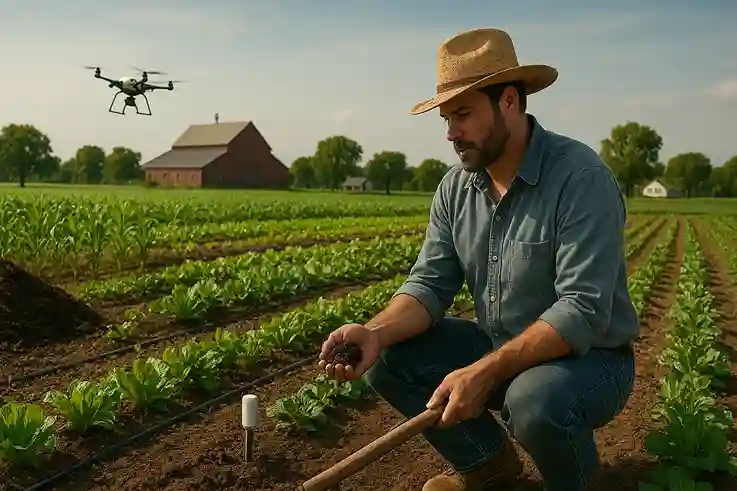
Blending Old Practices with New Technologies
Traditional techniques such as crop rotation, organic fertilization, and water-saving methods are no longer confined to the past. Today, these age-old practices are being reimagined within modern systems. When combined with advanced tools like soil sensors, satellite mapping, and precision irrigation, they create farming models that boost efficiency while preserving sustainability. This balance shows that innovation does not mean abandoning tradition—instead, it means elevating timeless wisdom with modern science.
Modern Adaptations Inspired by Tradition
Organic farming
Organic farming draws heavily from Traditional Farming methods. Instead of chemical inputs, it relies on compost, animal manure, and natural mulches to enrich the soil. Biological pest control, such as introducing beneficial insects, mirrors the old practice of working with nature rather than against it. These methods not only maintain soil fertility but also reduce long-term environmental damage. By preserving the balance of ecosystems, organic farming proves that ancient wisdom remains essential for a healthier future.
Permaculture
Permaculture designs farming systems that mirror the structure of natural ecosystems. Instead of forcing land into uniform patterns, it encourages diversity, balance, and long-term resilience. This approach reflects the harmony seen in ancestral practices, where farmers observed forests, rivers, and fields to guide their methods. By planting crops alongside trees, conserving water, and using natural ground cover, permaculture reduces waste and increases self-sufficiency. It is a modern expression of traditional wisdom—teaching us that farming thrives when it works with nature, not against it.
Agroecology
Agroecology integrates biodiversity and ecological principles into farming, creating systems that are productive and sustainable. Much like traditional community-based farming, it values diversity—planting multiple crops, preserving local seeds, and encouraging natural pollinators. Agroecology also emphasizes the social side of agriculture, highlighting fairness, shared knowledge, and farmer cooperation. By weaving together ecology and culture, it proves that agriculture is more than food production—it is a living relationship between people, land, and nature.
Real-Life Example
In parts of India and Latin America, farmers are reviving ancestral seed-saving methods while combining them with modern seed banks. This blend protects biodiversity while ensuring crops can adapt to climate change. Such cases show how the wisdom of the past can guide solutions for the future.
The Future of Traditional Farming
Traditional Farming faces constant pressure from industrial agriculture, rapid urbanization, and the unpredictable effects of climate change. Despite these challenges, its resilience shows that it can adapt and endure. In fact, as more people search for healthier food and environmentally responsible systems, traditional methods are gaining renewed importance. Whether in rural villages or urban gardens, these practices remind us that farming rooted in respect for nature will always have a place in shaping the future of food.
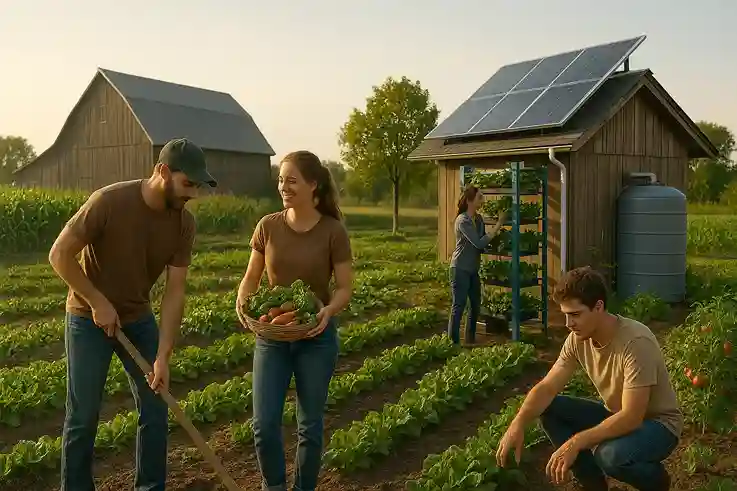
Importance for Food Security and Resilience
traditional Farming plays a vital role in ensuring food security by preserving seed diversity, protecting soil health, and encouraging self-sufficiency. Unlike industrial systems that often depend on a narrow range of crops, traditional methods cultivate a wide variety of plants. This diversity strengthens resilience, allowing communities to withstand pests, diseases, and climate shifts.
In times of crisis—whether drought, economic disruption, or global supply chain breakdowns—traditional practices offer stability. They promote local food systems that are less dependent on imports and external inputs, reducing vulnerability. By focusing on natural cycles and community cooperation, Traditional Farming shows that resilience is not just about surviving challenges, but thriving in harmony with the environment.
Opportunities for Young Farmers and Communities
A new generation of farmers is rediscovering ancestral wisdom, blending time-tested practices with modern tools and innovation. This revival is creating opportunities in local food markets, eco-tourism, and cultural preservation, while strengthening community resilience. Traditional Farming is no longer seen as outdated—it is evolving into a sustainable and meaningful path that inspires hope for future generations.
Conclusion
Traditional Farming is more than an old way of growing food—it is a philosophy rooted in patience, balance, and respect for the earth. Its lessons go beyond agriculture, reminding us of the value of community, sustainability, and mindful living.
In a world where speed often takes priority, Traditional Farming teaches that true abundance comes from harmony with natural cycles. By blending ancestral wisdom with modern innovations, we can create food systems that nourish both people and the planet.
The future of farming may be uncertain, but the wisdom of the past remains a guiding light. Traditional Farming is not fading—it is evolving, offering powerful lessons that continue to shape the path forward.
What are your thoughts on Traditional Farming—do you see it as a practice of the past or a guide for the future? Share your views in the comments.

Alexia Greene is a health blogger dedicated to making wellness simple, practical, and accessible for everyone. With a strong background in nutrition and healthy living, she writes about balanced diets, fitness tips, and mindful habits that support long-term well-being. Alexia’s mission is to empower readers with trustworthy information and actionable steps they can use in their everyday lives.
When she’s not writing, Alexia enjoys cooking wholesome meals, practicing yoga, and exploring new ways to live a healthier lifestyle. Her approachable style and evidence-based advice make her a trusted voice in the world of health and wellness blogging.
